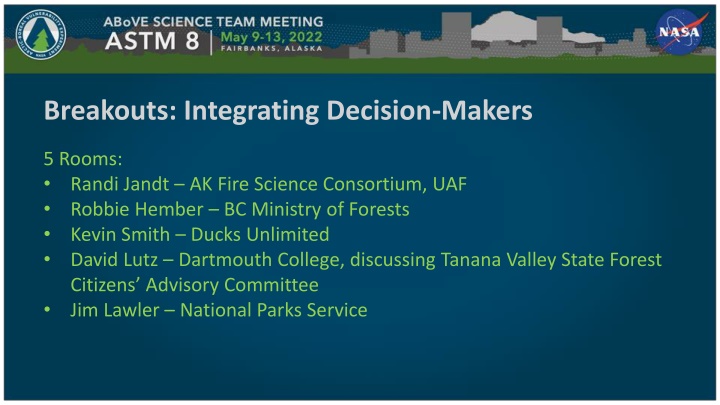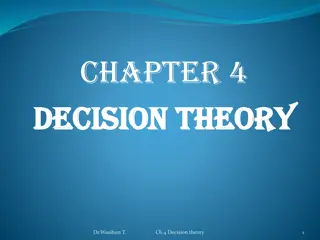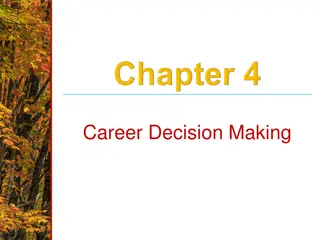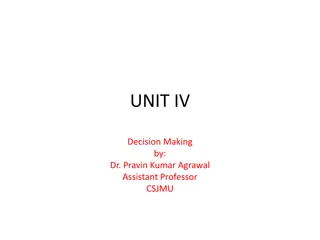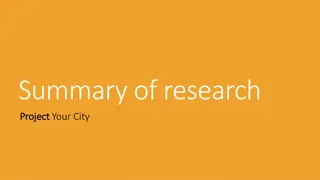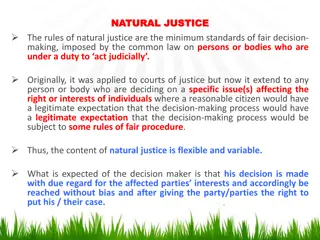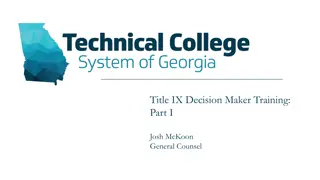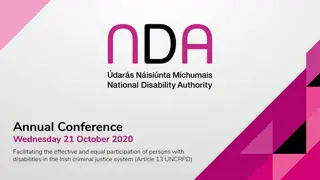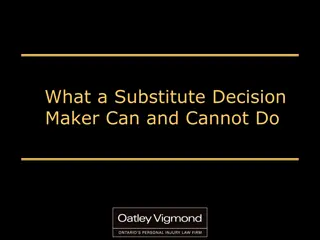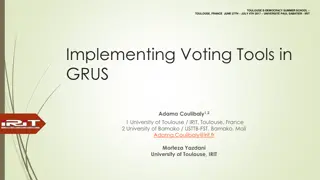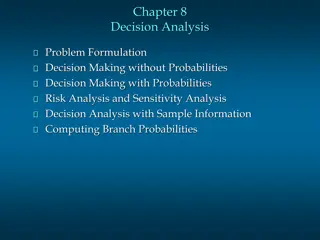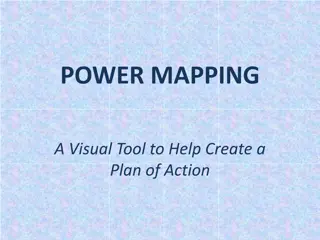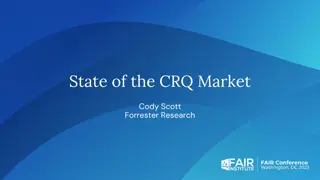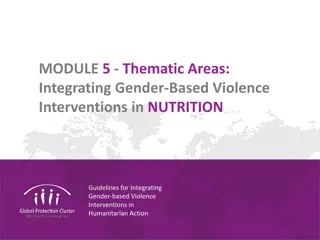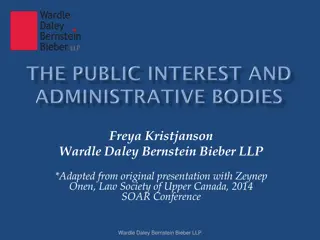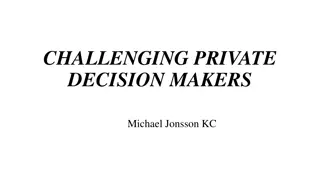Breakouts: Integrating Decision-Makers
Rooms filled with experts discussing strategies for implementing ABoVE science in land management plans, addressing barriers to collaboration, and emphasizing the importance of engaging local communities in forest management decisions.
Download Presentation

Please find below an Image/Link to download the presentation.
The content on the website is provided AS IS for your information and personal use only. It may not be sold, licensed, or shared on other websites without obtaining consent from the author.If you encounter any issues during the download, it is possible that the publisher has removed the file from their server.
You are allowed to download the files provided on this website for personal or commercial use, subject to the condition that they are used lawfully. All files are the property of their respective owners.
The content on the website is provided AS IS for your information and personal use only. It may not be sold, licensed, or shared on other websites without obtaining consent from the author.
E N D
Presentation Transcript
Breakouts: Integrating Decision-Makers 5 Rooms: Randi Jandt AK Fire Science Consortium, UAF Robbie Hember BC Ministry of Forests Kevin Smith Ducks Unlimited David Lutz Dartmouth College, discussing Tanana Valley State Forest Citizens Advisory Committee Jim Lawler National Parks Service
Break out: Brendan Rogers, Min Chen, Paul Macarney, Arden Burrell, Libby Larson, Robbie Hember How ABoVE science can help with land management plans ICESat2 estimates of height, aboveground biomass Applied research questions and monitoring applications are endless Land cover/use change mapping & attribution To support landscape level planning and AFOLU GHG reporting Classification of old growth forests in cold climates (natural or consistent) Future projections based on IAMs Biophysical radiative forcings (albedo, evap. cooling, moisture recycling) Should AFOLU climate change mitigation decisions and reporting recognize biophysical RF? If so how? (how to combine with GHG flux)
Break out: Brendan Rogers, Min Chen, Paul Macarney, Arden Burrell, Libby Larson, Robbie Hember How ABoVE science can help with land management plans Input variables and parameterization of empirical GHG models Partial disturbance is a major weakness Wildfire burn severity mapping pre-2017 Combustion fractions of biomass, dead wood, litter, soil Profiles of CO2, CH4, N2O emissions Future projections of productivity, uncertainty Vulnerability assessment Are there variations in plant carbon balance, hydraulic conductivity and ecosystem fuels that predispose regions to catastrophic disturbance? How do we map intra-specific variation in stress tolerance of natural populations? Real-time monitoring Synthesis
Break out: Brendan Rogers, Min Chen, Paul Macarney, Arden Burrell, Libby Larson, Robbie Hember What are some structural/logistical barriers that you see that limit collaboration? Any low- hanging fruit for solutions? NASA has basic science and applied science divisions A natural disconnect between ABoVE focus on baseline information vs. focus of natural resource management on things they can do something about The efficacy and outcome of policies and operations Science-wide movement toward involvement of people that are local to the areas we study Investing time and resources into exploring mutual interests and building relationships with local partners before formulating research questions takes funding, time, courage Cultural shift - building that exploratory step into the scientific method Communicating the cultural and societal implications of the findings Is science going to lose anything if we keep going down this road?
Break out: Brendan Rogers, Min Chen, Paul Macarney, Arden Burrell, Libby Larson, Robbie Hember What are some structural/logistical barriers that you see that limit collaboration? Any low- hanging fruit for solutions? Keep us posted Direction of Phase III Evolution of working groups Meetings and workshops like this one These are great opportunities for cross-agency dialogue
Break out: Brendan Rogers, Min Chen, Paul Macarney, Arden Burrell, Libby Larson, Robbie Hember Any specific advice for early career researchers and managers? What does your dream team project look like? What do you think things will be like in 10 years?
Possible Discussion Topics How ABoVE science can help groups like TVSF CAC with land management plans What are some structural/logistical barriers that you see that limit collaboration? Any low-hanging fruit for solutions? Any specific advice for early career researchers and managers? What does your dream team project look like? What do you think things will be like in 10 years? Please remember to designate someone to pay attention to the Zoom attendees and liaise with the in-person group.
